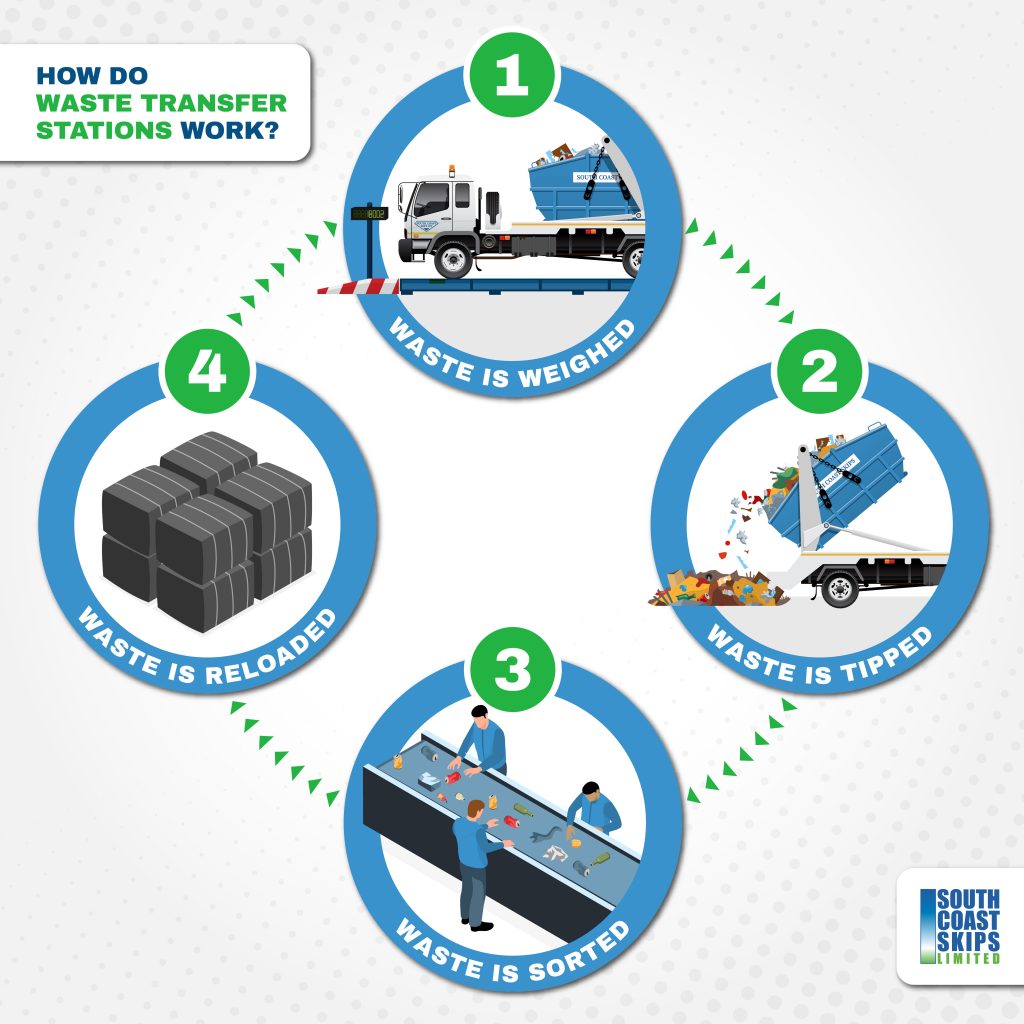What Is a Waste Transfer Station & How Does It Work?
When you load your waste into one of our skips, we’ll remove it and your part in the process is over. But what happens to your waste once we’ve collected it? Where does it go?
As a licensed waste carrier for the region, you can rely on us to take care of your waste in a responsible and legal manner, processing it at our waste transfer station. This month at SCS Waste, we’re going to tell you what a waste transfer station is, how it works and what happens to your waste when we’re done with it.

What is a waste transfer station?
A waste transfer station, sometimes known as a material recycling facility, is a site where your waste is taken, along with all the other waste we collect. Think of it as one of the important stops on the journey within the larger waste management cycle.
The waste transfer station is where it gets sorted and processed in a series of buildings as it makes its way to either being recycled or used to generate energy.
Most waste transfer stations require a large plot of land in order to provide space for the varied facilities required. This will usually include different tipping areas and the structures where processing takes place, as well as space for cranes and compactors.
How do waste transfer stations work?

A waste transfer station creates a midway point in the journey of your waste, and there are several phases involved before it moves on again. Here’s how a typical waste transfer station works in four basic steps:
- 1. Waste arrives and is weighed
Vehicles delivering waste to the transfer station must use the vehicle weighbridge to establish what the waste load is. - 2. Waste is tipped
Once the waste has been tipped at the site, the vehicle and the skip can be redeployed swiftly to help another customer. - 3. Waste is sorted
Now the waste can be separated and processed depending on whether it’s bound for recycling, reprocessing or landfill. There are various different machines and conveyors that handle this screening process, as well as some manual screening performed by hand. - 4. Waste reloaded
Once it has been processed and separated appropriately, the waste can be compacted or baled and then reloaded onto transport. It is then taken to a final destination on its journey.
What are the benefits of waste transfer stations?
A waste transfer station is a useful thing for many reasons, but here are just a few:
- Cost-effective transportation creates a midway point, allowing us to collect more waste for a more economical service
- By transferring waste to larger vehicles, we can reduce the number of vehicles on the road, lowering emissions and congestion
- Allows waste to be screened for unsafe items
- Screening increases the quantity of materials that can be recycled or reprocessed
- Improves safety for staff in transportation and further along in the processing chain by removing hazardous items
- Waste going through a transfer station is documented and recorded properly to ensure it is being dealt with in the most appropriate way
We hope that this piece has given you a little more insight into how a waste transfer station works. Here at SCS Waste, we have our very own state-of-the-art waste transfer station to help minimise the distance you have to travel to tip your waste, as well as maximising our service offering as a responsible waste management company for Arundel, Littlehampton, Bognor Regis and the surrounding areas.
If you’re looking for a licensed waste carrier to collect and manage your waste, or if you’re looking for a waste transfer station to tip your waste with, simply contact our friendly team today. We’ll be happy to assist you in dealing with your waste so that we can all do our part for the environment.

